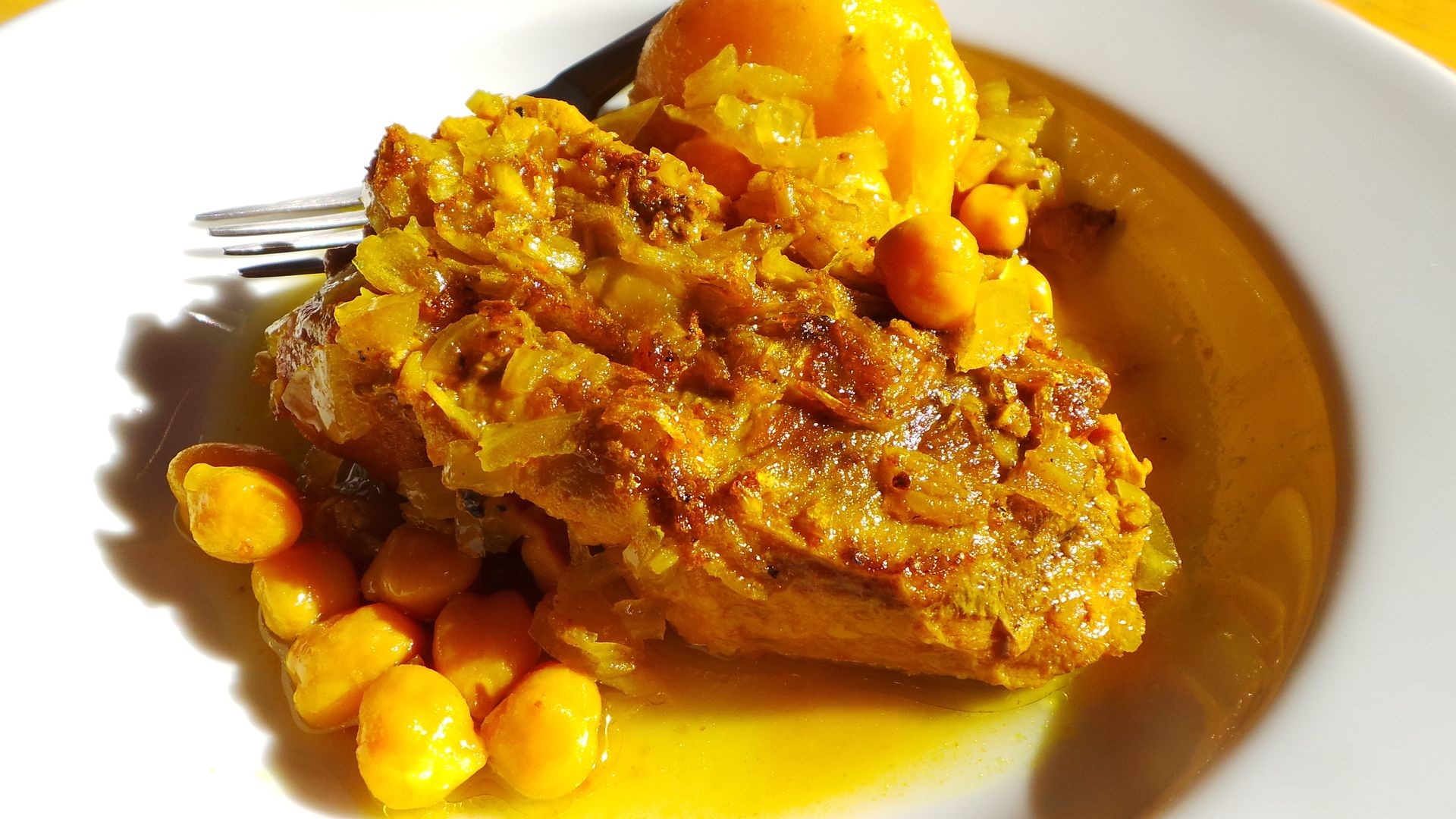Jewish Mediterranean
photo: Tafīna, Clifford A. Wright
Jewish Mediterranean
Tafīna
Tunisian Jewish Sabbath Veal Stew
Difficulty: Easy but long cooking time
Yield: Makes 4 servings
Preparation Time: 1 1/2 days
The sabbath adafina of Spanish Jews was a kind of stew or hotpot, which belongs to the same family of dishes as the Catalan escudella, the Andalusian cocido, the Spanish olla, the l’ollada of Roussillon, the cassoulet of Languedoc, the French pot-au-feu, and the Piedmontese bollito misto. In one of the most important cookbooks written in the past three decades, David M. Gitlitz and Linda Kay Davidson, using archival material, tell the story of Spain’s Marranos, the crypto-Jews who continued to follow their religion, in A Drizzle of Honey: The Lives and Recipes of Spain’s Secret Jews. Spanish Jews for centuries made adafina on Friday nights to cook slowly and be eaten on the sabbath. During the Spanish Inquisition, the Marranos and Moriscos, converted Jews and Muslims respectively, suffered all forms of doubt about the sincerity of their conversions to Christianity. One test of their purported newly-found Christian belief was the public eating of pork, forbidden to true Muslims and Jews.
Traditionally, the adafina was based on chicken, or more often, on veal or beef breast with hard-boiled eggs. During the Inquisition, it could be insisted that pork or pork fat was added to the adafina as a test to ferret out crypto-Jews and Muslims. This was a serious matter, because a Christian neighbor could happen by on a Saturday (the Jewish sabbath) and one would be expected to generously offer the guest some adafina. If there was no pork in it, the Marrano or Morisco was suspected of being a crypto-Jew or Muslim and could suffer dire consequences.
Adafina has died out among the Sephardic Jews who left for Turkey and Greece, but it is still popular among Algerian and Tunisian Jews as tafīna, a sumptuous meal reserved for festival days and most often made by Jewish housewives on Friday and kept warm over the ashes of a kannūna, a brazier, to be served for Saturday lunch. It is sometimes accompanied by couscous.
1 pound veal bones
1 beef or veal foot, or 4 lamb’s feet
4 pounds veal breast, trimmed of fat
1 large onion, finely chopped
1 cup dried chickpeas (about ½ pound), soaked in water to cover overnight, rinsed and picked over
1 pound boiling potatoes, such as Yukon gold, red potatoes or white potatoes, about the size of a lime, peeled and left whole
1 head garlic, papery covering scraped away
2 large eggs
1 tablespoon salt
1 teaspoon freshly ground black pepper
1 cinnamon stick
1 tablespoon turmeric
1 bay leaf
1 cup extra virgin olive oil
2 ½ quarts water
- In a large casserole or the bottom portion of a couscoussiere, place the veal bones and feet. Cover with the veal breast and the remaining ingredients in the order in which they are listed.
- Place the casserole over a very low heat, using a heat diffuser, or simmer-control, at about 6:00 pm, leaving it partially covered. Cook slowly until noon the next day. Check two or three times to see that the water level is fine, which it should be. Serve with rice or couscous.
Note: If you feel uncomfortable with an unattended flame, preheat the oven to 170 degrees F and place the casserole in until noon the next day.
Note: this is an ideal dish to cook in a crockpot.
Makes 4 servings
